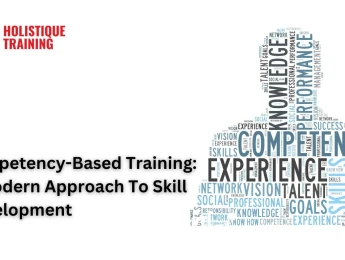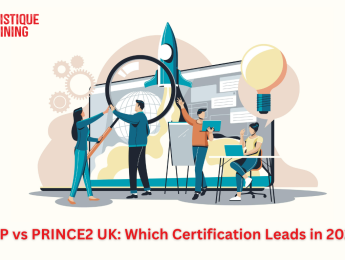- Table of Contents
- Introduction
- What Are the Four Types of Basic Competencies?
- 1. Core Competencies
- 2. Functional Competencies
- 3. Behavioural Competencies
- 4. Technical Competencies
- What is Competency-Based Training (CBT)?
- Components of Competency-Based Training
- A Brief History of Competency-Based Training
- Why is Competency-Based Training Important?
- 1. Alignment with Business Goals
- 2. Enhanced Employee Performance
- 3. Improved Employee Engagement
- 4. Adaptability to Change
- 5. Cost-Effectiveness
- 6. Better Retention Rates
- 7. Continuous Learning and Development
- 8. Enhanced Succession Planning
- How is Competency-Based Training Different from Traditional Training?
- Focus on Competencies vs. Time:
- Individualised Learning Paths:
- Assessment Methods:
- Feedback and Adaptability:
- Emphasis on Practical Application:
- Best Practices for Adding Competency-Based Training to Your Company’s Learning and Development Program
- 1. Conduct a Competency Gap Analysis
- 2. Create a Competency Matrix
- 3. Set Clear Competency Standards
- 4. Design Individual Learning Plans
- 5. Incorporate a Variety of Training Methods
- 6. Foster a Culture of Feedback
- 7. Monitor Progress and Adjust as Needed
- How to Know if Competency-Based Training is Right for Your Company
- 1. Clear Organisational Goals and Objectives
- 2. Existing Training Infrastructure
- 3. Employee Engagement and Development Culture
- 4. Specific Competency Requirements
- 5. Organisational Size and Structure
- 6. Readiness for Change
- 7. Evaluation Metrics and Feedback Mechanisms
- 8. Competitiveness in the Industry
- Utilising Technology in Your Company’s Competency-Based Training
- 1. Learning Management Systems (LMS)
- 2. E-Learning Modules
- 3. Competency Assessment Tools
- 4. Virtual and Augmented Reality (VR/AR)
- 5. Mobile Learning Solutions
- 6. Collaboration and Social Learning Platforms
- 7. Data Analytics and Reporting
- 8. Integration with Existing Systems
- Conclusion
Introduction
Navigating the complexities of today’s workforce requires more than just a traditional approach to employee training. Organisations increasingly recognise the need for a more tailored and effective method that aligns with business goals and employee development. This is where Competency-Based Training (CBT) emerges as a critical strategy. This blog post delves into what competency-based training entails, its core components, historical evolution, significance in the modern workplace, and practical tips for implementation. By the end, you will comprehensively understand how CBT can transform your company’s learning and development framework.
What Are the Four Types of Basic Competencies?
Before diving into the intricacies of competency-based training, one must grasp what competencies are. Competencies refer to the skills, knowledge, and behaviours individuals need to perform effectively in their roles. The four types of basic competencies can be categorised as follows:
1. Core Competencies
Core competencies represent the fundamental skills and attributes that are essential across various jobs and industries. These competencies form the foundation upon which other skills are built and are critical for organisational success. Core competencies typically include:
- Communication Skills: The ability to convey information clearly and effectively, both verbally and in writing. Strong communication fosters collaboration and minimises misunderstandings among team members.
- Problem-Solving Skills: The capacity to identify issues, analyse situations, and develop effective solutions. Employees with strong problem-solving skills can navigate challenges and adapt to changes in their work environment.
- Teamwork and Collaboration: The ability to work effectively with others toward common goals. Teamwork is vital for fostering a positive workplace culture and achieving shared objectives.
- Adaptability: The willingness and ability to adjust to new conditions, tasks, or challenges. Adaptability is crucial for remaining relevant and effective in today's fast-paced work environments.
Core competencies are essential for all employees, regardless of their specific job functions, and serve as a benchmark for evaluating performance and potential.
2. Functional Competencies
Functional competencies refer to the specialised skills and knowledge required to perform specific tasks related to particular job functions or roles. These competencies are tailored to the unique requirements of various positions within an organisation and may include:
- Technical Proficiency: Knowledge and skills related to specific tools, technologies, or methodologies used in a particular field. For example, a software developer must have expertise in programming languages and software development practices.
- Industry Knowledge is understanding the trends, regulations, and standards relevant to a specific industry. For instance, healthcare professionals must be familiar with medical guidelines and laws.
- Role-Specific Skills: Competencies unique to a job function, such as sales techniques for sales representatives or project management skills for project managers.
Functional competencies ensure employees can effectively perform their responsibilities and contribute to the organisation’s success.
3. Behavioural Competencies
Behavioural competencies focus on the personal attributes and interpersonal skills that influence how employees interact with others and approach their work. These competencies are often linked to an employee's character and work ethic and play a significant role in shaping workplace culture. Key behavioural competencies include:
- Emotional Intelligence: The ability to understand and manage one’s emotions and empathise with others. Employees with high emotional intelligence can navigate social complexities and build strong relationships.
- Leadership Skills: The ability to inspire, guide, and influence others. Leadership competencies are not limited to formal leaders; they also apply to employees at all levels who demonstrate initiative and take ownership of their responsibilities.
- Conflict Resolution: The capacity to address and resolve disagreements constructively. Strong conflict resolution skills contribute to a harmonious workplace environment and help maintain team cohesion.
Behavioural competencies are essential for fostering positive interactions, collaboration, and a productive work environment.
4. Technical Competencies
Technical competencies encompass the specific knowledge and skills required to perform specialised tasks effectively within a particular field. These competencies are typically acquired through formal education, training, or hands-on experience. Examples of technical competencies include:
- Software Proficiency: Familiarity with specific software applications or tools required for job performance, such as proficiency in Microsoft Excel for data analysis or design software for graphic designers.
- Technical Skills: Knowledge of processes, procedures, and methodologies unique to a field. For instance, engineers must understand design principles, while accountants need expertise in financial regulations and reporting.
- Certification and Licensing: Many technical roles require certifications or licences that validate an individual's expertise and competence in their area of specialisation, such as certifications for IT professionals or medical licences for healthcare providers.
Technical competencies ensure that employees have the requisite skills to perform their tasks effectively and contribute to the organisation’s operational efficiency.
Understanding the four types of basic competencies—core, functional, behavioural, and technical—enables organisations to develop comprehensive competency frameworks. These frameworks guide the design of Competency-Based Training programs, ensuring that employees acquire the necessary skills and knowledge to perform their jobs effectively. By investing in developing these competencies, organisations can enhance employee performance, drive productivity, and foster a culture of continuous learning and improvement.
What is Competency-Based Training (CBT)?
Competency-based training (CBT) is an educational approach that emphasises the attainment of specific competencies and skills rather than the traditional focus on time spent in training. It ensures that employees acquire the necessary competencies to perform their jobs effectively and is typically structured around a clear set of outcomes.
Components of Competency-Based Training
Competency Framework:
This is the backbone of CBT, outlining the competencies required for various organisational roles. It acts as a roadmap for both employees and trainers.
Assessment Methods:
CBT employs various assessment techniques to evaluate an individual’s proficiency in specific competencies. This may include tests, practical demonstrations, or project-based assessments.
Individual Learning Plans:
Each employee’s learning path is tailored to address their specific competency gaps. This personalised approach ensures that training is relevant and impactful.
Feedback Mechanisms:
Continuous feedback is integral to CBT. It allows employees to understand their progress and areas needing improvement. This may involve regular check-ins, performance reviews, and constructive feedback sessions.
Ongoing Development:
CBT emphasises lifelong learning, encouraging employees to continually refine and enhance their competencies even after completing their initial training.
CBT fosters a more engaged and capable workforce by focusing on measurable outcomes and individual growth.
A Brief History of Competency-Based Training
Competency-based training (CBT) began in the early 1970s when educational institutions began to recognise the limitations of traditional teaching methods. The push for CBT was driven by the need for a more practical and results-oriented approach to learning, particularly in vocational and technical education.
In the 1980s, the rise of competency frameworks in various industries, particularly healthcare and manufacturing, further popularised CBT. Organisations realised that aligning training with specific competencies could improve performance, efficiency, and employee satisfaction.
Over the years, CBT has evolved, integrating advancements in technology and learning sciences. The advent of online learning platforms and digital resources has made it easier for organisations to implement CBT at scale, enabling employees to access training anytime and anywhere.
Why is Competency-Based Training Important?
Competency-based training (CBT) is more than just a modern trend in workforce development; it represents a fundamental shift in how organisations approach employee training and professional growth. The importance of CBT can be understood through several key dimensions, each contributing to the overall effectiveness and sustainability of a workforce in today's dynamic business environment.
1. Alignment with Business Goals
One of the most compelling reasons for adopting CBT is its ability to align training initiatives and organisational objectives directly. In a competitive marketplace, companies must ensure that their workforce is equipped with the skills necessary to achieve strategic goals. CBT focuses on the specific competencies essential for success in particular roles, allowing organisations to tailor their training efforts to address the skills that drive performance. This alignment helps to ensure that training is not just a box-ticking exercise but a vital contributor to achieving key business outcomes, such as increased revenue, improved customer satisfaction, and enhanced market share.
2. Enhanced Employee Performance
CBT fosters targeted skill development, ensuring employees gain the knowledge and abilities necessary to perform their jobs effectively. By concentrating on the competencies required for each role, CBT leads to a more skilled workforce that can operate at a higher level of productivity. For example, when employees are trained specifically on the competencies relevant to their job functions, they are better equipped to tackle challenges, make informed decisions, and deliver quality results. This enhanced performance benefits individual employees and contributes to overall organisational success.
3. Improved Employee Engagement
Engaged employees are more likely to be productive, innovative, and committed to their organisations. CBT fosters engagement by allowing employees to take ownership of their learning journeys. Employees can pursue individualised learning paths tailored to their needs and career aspirations rather than participating in generic training programs that may not be relevant to their specific roles. This personalised approach promotes a sense of agency and responsibility for their development, leading to higher levels of motivation and commitment to the organisation. Employees who see the value of training in enhancing their skills and career prospects are more likely to be engaged and satisfied with their work.
4. Adaptability to Change
The rapid pace of change in today’s business landscape necessitates an agile and adaptable workforce. CBT enables organisations to quickly adjust training programs to respond to evolving industry standards, technological advancements, and shifting market demands. Organisations can modify their competency frameworks and training initiatives as new competencies emerge. This flexibility ensures that employees continuously develop relevant skills, allowing the organisation to remain competitive and responsive to change. Additionally, when employees are trained to be adaptable, they can better navigate challenges and capitalise on new opportunities, making the organisation more resilient.
5. Cost-Effectiveness
Implementing effective training programs can be a significant investment for organisations. CBT helps to optimise training expenditures by focusing on the competencies that yield the greatest return on investment. Traditional training methods often involve a one-size-fits-all approach, which can result in wasted time and resources on irrelevant content. In contrast, CBT allows organisations to target their training efforts on the areas that matter most, ensuring that employees receive the skills they need to succeed. This targeted approach can lead to reduced training costs and improved efficiency, as employees spend less time in training and more time applying their skills to their work.
6. Better Retention Rates
Organisations investing in effective training and development programs often have higher employee retention rates. Employees who feel that their employer is committed to their professional growth through targeted training initiatives are more likely to feel valued and satisfied in their roles. CBT, emphasising personalised learning and skill development, enhances employee morale and loyalty. High retention rates save organisations money on recruitment and onboarding and foster a more stable and experienced workforce. This stability can improve teamwork, collaboration, and a stronger organisational culture.
7. Continuous Learning and Development
Competency-based training promotes a culture of continuous learning within organisations. CBT continually encourages employees to develop and refine their competencies, aligning with the modern expectation of lifelong learning. This approach helps organisations cultivate a constantly evolving workforce, staying updated on the latest trends and skills within their industry. Continuous learning enhances individual employee performance and strengthens the organisation as a whole, creating a culture of innovation and adaptability.
8. Enhanced Succession Planning
As organisations grow and evolve, effective succession planning becomes increasingly important. CBT plays a crucial role in identifying and developing potential organisational leaders. By establishing clear competency frameworks and assessments, organisations can identify high-potential employees with the necessary skills and behaviours to succeed in leadership roles. This proactive approach to talent development ensures that organisations have a pipeline of capable leaders ready to step into critical positions when needed, thus supporting long-term sustainability and growth.
The importance of Competency-Based Training cannot be overstated. By aligning training initiatives with business goals, enhancing employee performance, improving engagement, and fostering adaptability, CBT creates a robust framework for workforce development. As organisations navigate the complexities of the modern business landscape, investing in competency-based training will become increasingly essential to achieving long-term success and sustainability. Organisations can empower their employees, drive performance, and position themselves for future growth by committing to targeted skill development.
How is Competency-Based Training Different from Traditional Training?
The distinction between competency-based training and traditional training methods is significant.
Focus on Competencies vs. Time:
Traditional training often measures success based on the time spent in training rather than the actual skills acquired. CBT, on the other hand, prioritises competency attainment and performance outcomes.
Individualised Learning Paths:
In traditional training, the curriculum is typically standardised for all participants, regardless of their individual needs. CBT tailors learning experiences to address specific competency gaps for each employee.
Assessment Methods:
Traditional training may rely heavily on written tests and examinations, which can fail to assess practical skills adequately. CBT employs diverse assessment methods that reflect real-world applications and job-specific tasks.
Feedback and Adaptability:
Traditional training often lacks ongoing feedback mechanisms, leading to a disconnect between learning and application. CBT emphasises continuous feedback and allows for adjustments to training programs based on employee progress and organisational needs.
Emphasis on Practical Application:
While traditional training may include theoretical components, CBT focuses on applying learned competencies in practical, real-world scenarios, ensuring employees can effectively use their skills.
These differences illustrate how CBT can provide a more effective and engaging learning experience than traditional training approaches.
Best Practices for Adding Competency-Based Training to Your Company’s Learning and Development Program
Implementing competency-based training within your organisation requires careful planning and execution. Here are some practical tips to get started:
1. Conduct a Competency Gap Analysis
Begin by assessing your workforce's current competencies against the competencies required for each role. This analysis will help identify gaps and prioritise areas for training. Use surveys, interviews, and performance data to gather insights.
2. Create a Competency Matrix
Develop a competency matrix that outlines the competencies required for each position within the organisation. This matrix will serve as a visual guide, helping managers and employees understand expectations and requirements.
Here’s an example of a competency matrix:
Competency | Description | Proficiency Level |
Communication Skills | Effectively conveys information clearly. | Beginner, Intermediate, Advanced |
Problem-Solving Skills | Identifies issues and develops solutions. | Beginner, Intermediate, Advanced |
Teamwork | Collaborates well with team members. | Beginner, Intermediate, Advanced |
Technical Proficiency | Knowledge of relevant software tools. | Beginner, Intermediate, Advanced |
Emotional Intelligence | Understands and manages emotions effectively. | Beginner, Intermediate, Advanced |
3. Set Clear Competency Standards
Establish clear and measurable standards for each competency. Define what success looks like, including the skills and behaviours expected from employees. This clarity will guide both training and assessment efforts.
4. Design Individual Learning Plans
Tailor learning plans to address individual employee needs based on the competency gap analysis. This personalised approach will ensure that training is relevant and aligned with career development goals.
5. Incorporate a Variety of Training Methods
To accommodate different learning styles, including online courses, workshops, mentoring, and on-the-job training, utilise various training methods. This diversity will enhance engagement and retention.
6. Foster a Culture of Feedback
Encourage a culture of open feedback where employees receive constructive input on their progress. Regular check-ins and assessments will help employees stay on track and identify areas for improvement.
7. Monitor Progress and Adjust as Needed
Continuously monitor the effectiveness of your CBT program by analysing employee performance and feedback. Be prepared to adjust training programs based on changing business needs and employee development goals.
Metric | Description |
Employee Performance Improvement | Evaluates job performance post-training. |
Skills Acquisition Rate | Measures the percentage of skills learned. |
Training Completion Rate | Tracks the number of completed training sessions. |
Employee Engagement Level | Assesses participants’ involvement in training. |
Feedback and Satisfaction | Gathers trainee feedback on training quality. |
Table: Metrics to measure the effectiveness of competency-based training
By following these tips, organisations can successfully integrate competency-based training into their learning and development programs, enhancing employee performance and organisational success.
How to Know if Competency-Based Training is Right for Your Company
Determining whether Competency-Based Training (CBT) is the right fit for your organisation requires careful consideration of several factors. CBT can be a powerful tool for enhancing workforce skills and aligning training with business objectives, but its successful implementation hinges on specific organisational needs and readiness. Here are key indicators and considerations to help you assess whether CBT suits your company.
1. Clear Organisational Goals and Objectives
Before implementing CBT, it's essential to have well-defined organisational goals and objectives. Ask yourself:
- Alignment with Business Strategy: Does your organisation have a clear vision and strategic goals? CBT is most effective when aligned with the company's overall mission and direction. If your organisation is focused on improving performance, increasing efficiency, or expanding into new markets, CBT can help develop the specific competencies needed to achieve these objectives.
- Need for Skill Development: Is there a pressing need to develop specific skills or competencies within your workforce? If your organisation faces challenges related to skill gaps, CBT can provide a targeted approach to training, ensuring that employees acquire the essential skills required for their roles.
2. Existing Training Infrastructure
Evaluate your current training infrastructure to determine if it can support a transition to CBT:
- Current Training Programs: Assess the effectiveness of your existing training programs. Are they meeting the needs of employees and the organisation? If traditional training methods fall short, transitioning to CBT may benefit.
- Technology Readiness: Consider the technology and tools currently available for training and development. A robust Learning Management System (LMS) or e-learning platform can enhance the implementation of CBT. If your organisation lacks these tools, you may need to invest in technology to support CBT initiatives.
3. Employee Engagement and Development Culture
A strong culture of learning and development is essential for the success of CBT:
- Employee Commitment to Learning: Are employees motivated to learn and develop? A workforce that values continuous improvement will likely benefit from a competency-based approach. If employees are already seeking opportunities to enhance their skills, CBT can align with their aspirations.
- Support from Leadership: Does your leadership team prioritise employee development? Successful CBT implementation requires strong support from management. If leadership is committed to fostering a culture of continuous learning and skill development, it will create an environment conducive to CBT.
4. Specific Competency Requirements
Assess whether your organisation has specific competencies that are critical for success:
- Role-Specific Competencies: Do your job roles require specific competencies essential for performance? CBT can help employees develop the targeted skills necessary for their positions if your organisation operates in a complex or highly specialised field.
- Competency Framework: Do you have a clear competency framework in place? If your organisation has already defined the key competencies required for various roles, transitioning to CBT becomes more straightforward. If not, you may need to invest time in developing this framework before implementing CBT.
5. Organisational Size and Structure
The size and structure of your organisation can impact the feasibility of CBT:
- Size of the Workforce: For larger organisations with diverse roles, CBT can provide a structured approach to training that ensures all employees receive the necessary skills. Smaller organisations may also benefit, but they need to assess whether the investment in CBT aligns with their size and resources.
- Hierarchical Structure: Consider the organisational structure and how it affects training. If your organisation has distinct departments or teams, CBT can help tailor training to meet the specific needs of each group, ensuring that training is relevant and effective.
6. Readiness for Change
Implementing CBT often requires a shift in mindset and processes within the organisation:
- Willingness to Embrace New Approaches: Is your organisation open to changing traditional training methods? Transitioning to CBT may require overcoming resistance to change. If your organisation has a culture of innovation and adaptability, it is better positioned to embrace CBT.
- Investment in Resources: Are you willing to invest the necessary time and resources into developing and implementing a CBT program? Successful CBT initiatives require a commitment to training development, technology, and ongoing assessment. If your organisation is prepared to allocate these resources, CBT may be a good fit.
7. Evaluation Metrics and Feedback Mechanisms
Consider your organisation’s approach to evaluation and feedback:
- Focus on Measurable Outcomes: Is your organisation committed to measuring the effectiveness of training programs? CBT is highly focused on measurable outcomes and competencies. If you have systems in place to assess employee performance and training effectiveness, it can facilitate the successful implementation of CBT.
- Continuous Feedback Loops: Does your organisation have mechanisms for gathering feedback from employees regarding their training experiences? Continuous feedback is essential for refining training programs and ensuring they meet the workforce's needs. If your organisation values feedback and uses it to inform decisions, it will support the CBT approach.
8. Competitiveness in the Industry
The industry in which your organisation operates can influence the appropriateness of CBT:
- Industry Standards and Trends: Are specific competencies increasingly important in your industry? If your industry is evolving rapidly, organisations that embrace CBT can remain competitive by equipping employees with the latest skills and knowledge.
- Regulatory Requirements: In industries subject to regulations or standards, CBT can help ensure that employees are trained on the necessary competencies to comply with these requirements. If your organisation faces such challenges, CBT may be a suitable solution.
Determining whether Competency-Based Training is the right approach for your organisation involves carefully evaluating your goals, culture, and current training practices. You can decide whether to implement CBT by considering factors such as alignment with organisational objectives, existing training infrastructure, employee engagement, and industry competitiveness. Suppose the indicators suggest CBT aligns with your organisation’s needs. In that case, the next step is to develop a strategic plan for its integration, paving the way for enhanced employee performance and long-term success.
Utilising Technology in Your Company’s Competency-Based Training
Technology plays a pivotal role in the successful implementation of competency-based training. Here are some ways to leverage technology:
1. Learning Management Systems (LMS)
A robust Learning Management System (LMS) is the backbone of any competency-based training program. Here’s how an LMS can facilitate CBT:
- Centralised Learning Hub: An LMS provides a centralised platform where all training materials, resources, and assessments can be stored and accessed. This allows employees to learn at their own pace, ensuring they can focus on the competencies relevant to their roles.
- Customisable Learning Paths: Most modern LMS platforms allow for the creation of customised learning paths tailored to specific competencies. This means employees can engage with content that directly correlates with their role and developmental needs, enhancing the relevance and effectiveness of their training.
- Tracking Progress and Competency Development: LMS platforms often include tracking and reporting features that enable managers to monitor employee progress in real time. Organisations can make data-driven decisions about training needs and effectiveness by providing analytics on competency mastery.
2. E-Learning Modules
E-learning modules are essential for delivering competency-based training in a flexible and engaging format:
- Interactive Content: E-learning modules can incorporate various interactive elements, such as quizzes, simulations, and multimedia resources, making the learning process more engaging. These features not only enhance retention but also cater to different learning styles.
- Microlearning Opportunities: Breaking down content into smaller, bite-sized modules allows employees to focus on specific competencies without overwhelming them. This microlearning approach facilitates quick and efficient skill acquisition, enabling employees to absorb information at their own pace.
- Accessibility: E-learning modules can be accessed anytime and anywhere, providing employees with the flexibility to learn when it suits them best. This is particularly beneficial for organisations with remote workers or those operating in multiple locations.
3. Competency Assessment Tools
Effective competency-based training relies heavily on assessing employee skills and competencies accurately:
- Automated Assessments: Utilising technology for competency assessments allows organisations to automate testing and evaluation processes. This saves time and ensures that assessments are consistent and objective.
- 360-Degree Feedback Tools: Technology can facilitate 360-degree feedback mechanisms, where employees receive input from peers, supervisors, and subordinates. This holistic view of an employee’s competencies can provide valuable insights for development.
- Skill Assessment Platforms: Various platforms offer tailored assessments designed to evaluate specific competencies. These tools can identify skill gaps and help organisations develop targeted training programs.
4. Virtual and Augmented Reality (VR/AR)
Emerging technologies like VR and AR are transforming the training landscape by providing immersive learning experiences:
- Simulations for Practical Skills: VR can simulate real-world scenarios, allowing employees to practise their skills in a risk-free environment. For example, medical professionals can use VR to practise surgical procedures, while customer service representatives can engage in simulated interactions with clients.
- Enhanced Engagement: VR and AR's immersive nature can significantly boost employee engagement and motivation. When employees can visualise and interact with the training content, they are more likely to retain and apply information in real-world situations.
5. Mobile Learning Solutions
Mobile learning solutions enable employees to engage with training content through their smartphones or tablets:
- On-the-Go Access: Employees can access training materials and resources wherever they are, making it easier to fit learning into their busy schedules. This flexibility can lead to increased participation and completion rates in CBT programs.
- Push Notifications and Reminders: Mobile platforms can send reminders and notifications to encourage employees to engage with training materials. These timely nudges can help keep learning at the forefront of their daily activities.
6. Collaboration and Social Learning Platforms
Leveraging social learning and collaboration tools can enhance the CBT experience:
- Peer Learning: Platforms facilitating social learning allow employees to share knowledge, experiences, and resources. This collaborative approach fosters a culture of continuous learning and enables employees to benefit from each other’s expertise.
- Discussion Forums and Communities: Creating online forums or communities where employees can discuss competencies, share challenges, and seek advice can further enhance the learning experience. This encourages active engagement and knowledge sharing.
7. Data Analytics and Reporting
Utilising data analytics is crucial for measuring the effectiveness of CBT programs:
- Tracking Competency Development: Advanced analytics can provide insights into individual and group competency development over time. Organisations can analyse trends and patterns, identifying which competencies may need additional focus or resources.
- Feedback for Continuous Improvement: Organisations can continuously refine and improve their CBT initiatives by collecting and analysing employee feedback regarding the training experience. This data-driven approach ensures that training remains relevant and effective.
8. Integration with Existing Systems
For technology to be truly effective, it should integrate seamlessly with existing organisational systems:
- HR and Talent Management Systems: Integrating CBT with HR and talent management systems allows for a holistic view of employee development. Organisations can track training progress alongside performance evaluations, succession planning, and career development efforts.
- API Capabilities: Many modern training technologies offer API capabilities that allow them to connect with other software and platforms used within the organisation. This integration enhances data flow and ensures a cohesive approach to employee development.
Utilising technology in your company's Competency-Based Training initiatives can significantly enhance the effectiveness, accessibility, and engagement of training programs. Organisations can create a dynamic and responsive training environment by leveraging tools such as Learning Management Systems, e-learning modules, assessment tools, VR/AR technologies, mobile solutions, and collaboration platforms. Technology integration streamlines the learning process and enables organisations to gather valuable insights into employee performance, ensuring that training aligns with organisational goals and prepares the workforce for future challenges. As you explore the potential of technology in CBT, consider how it can be tailored to meet your organisation's and its employees' unique needs.
Conclusion
Competency-based training offers a transformative approach to employee development, emphasising the acquisition of specific competencies that align with organisational goals. Organisations can strategically implement CBT to enhance employee performance and engagement by understanding its components, historical context, and benefits. Competency-based training can become a cornerstone of a company's learning and development program through careful planning, the incorporation of technology, and a focus on continuous improvement. Embracing this innovative approach prepares employees for current challenges and equips them with the skills to thrive in an ever-evolving workforce.
Consider enrolling in our Competency & Value Development & Implementation course to enrich your organisation's training strategy further. This comprehensive program provides insights and practical tools to develop and implement competency frameworks tailored to your unique business needs. Empower your team to reach their full potential and drive organisational success through targeted competency development.
























